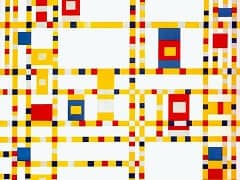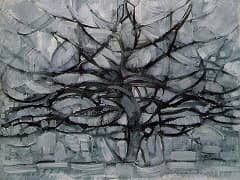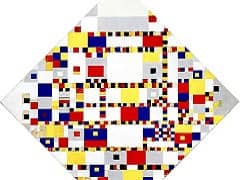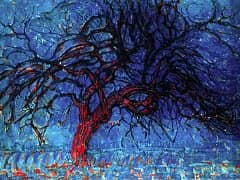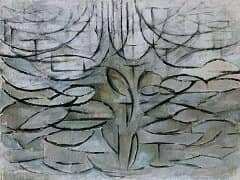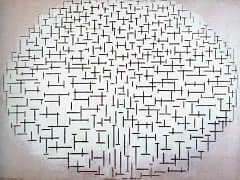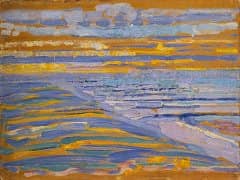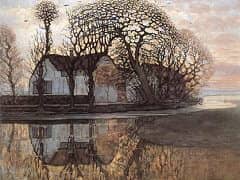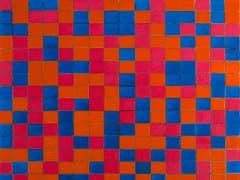Woods near Oele, 1908 by Piet Mondrian
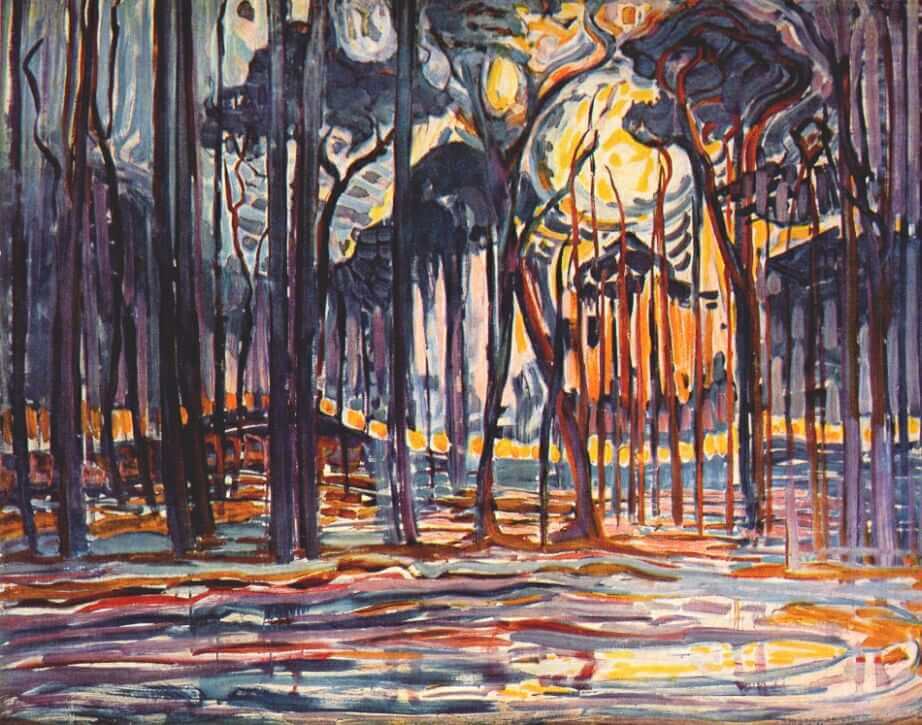
This large canvas, whose subject has been identified by Mondrian's old friend, A. P. van den Briel, as the woods near the village of Oele in the Twente district of the eastern Netherlands, evidently marks a milestone in the painter's work. It shows the phase of his art in which his horizon opened up and he began to look beyond the somewhat narrow boundaries of the Dutch school. To be sure, it was Dutch artists who had opened up vistas toward more spacious regions for him. Among these artists in particular were Jan Toorop, then the representative of a "luminism" based on the experiments of the neo-impressionists, and Jan Sluijters, who, after returning from Paris (and his Prix de Rome), was the leader of a forward-pushing younger generation desirous of escaping the confines of the Hague school's aesthetic creed and taking part in the rebellion of a generation which had broken out everywhere in Europe.
There exists a preliminary study for the painting, probably done on the spot, and a drawing reproducing part of the theme. The painting itself is clearly a transitional work. On the one hand it belongs, with such canvases as Trees on the Gein, with Rising Moon, to a period in which a scene of nature is brought to sober, almost solemn simplicity by means of rigorous stylization and stringent two-dimensional treatment. On the other hand, the color, the brushwork, and the rhythm of the painting betray a dynamism that indicates foreign influences. These trends in the painting of the early twentieth century - not just fauvism, but also the linear excitement of the Jugendstil and the fierce expressive accents of paintings and prints of Edvard Munch- had hitherto passed Mondrian by.
The new view of reality, the realization that there are forces existing in nature related to those of human feeling and thought, stimulated Mondrian to attempt a fresh approach. And so, constantly painting, he went on from this great transitional work to develop an original style that gave clear expression to his belief in the forces of life, in the power of light and color. The Woods near Oele is at the threshold of this new period.

